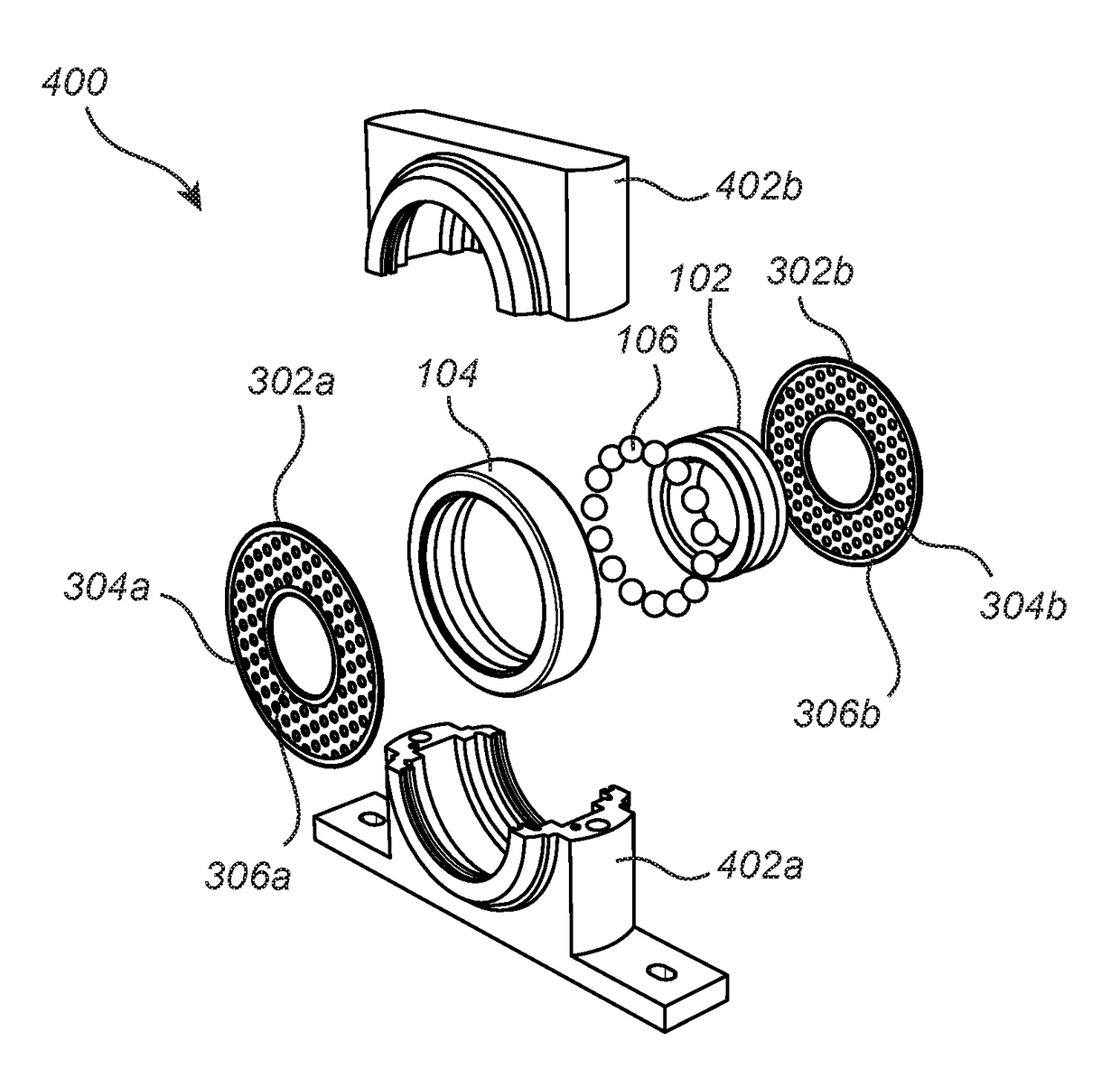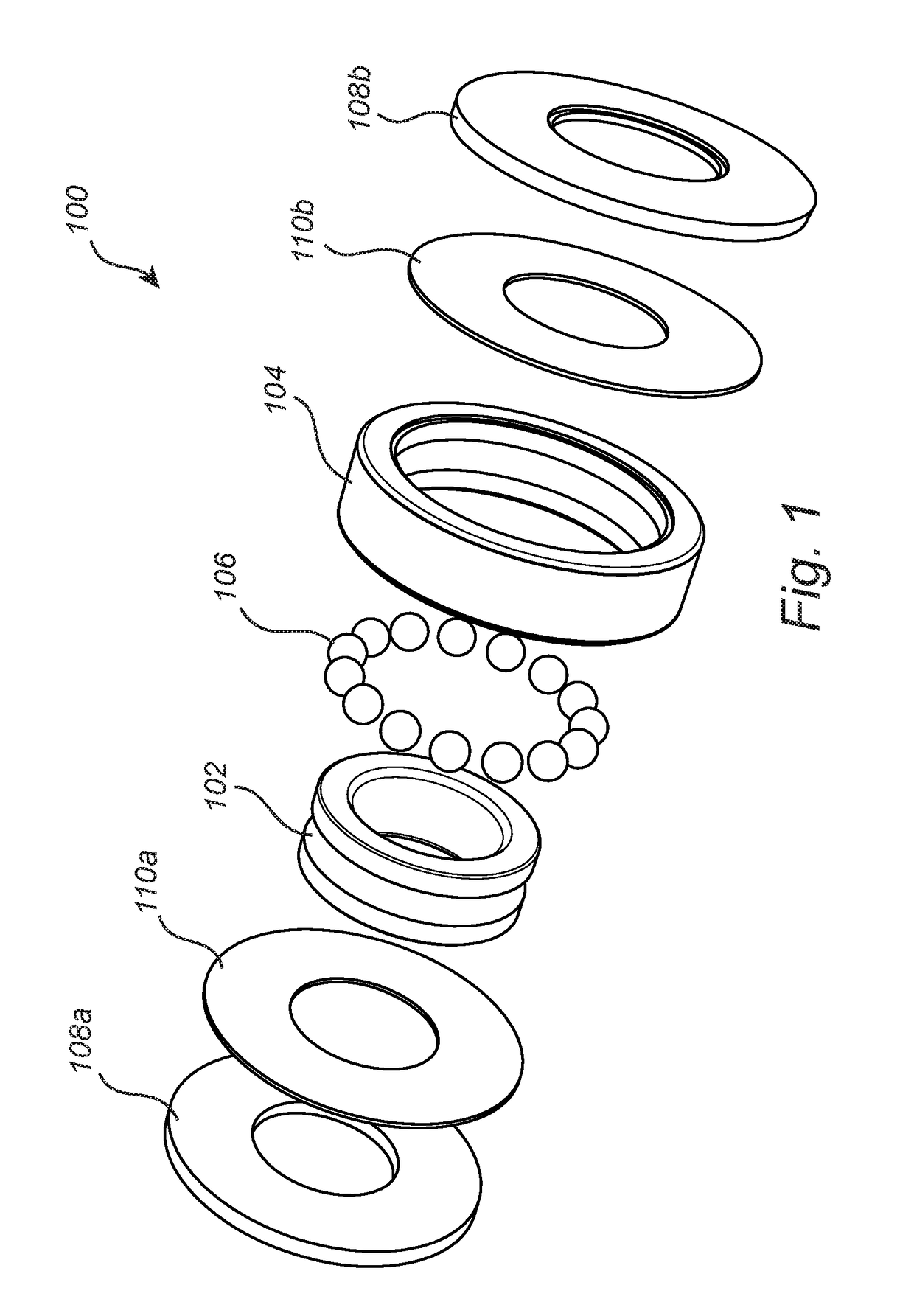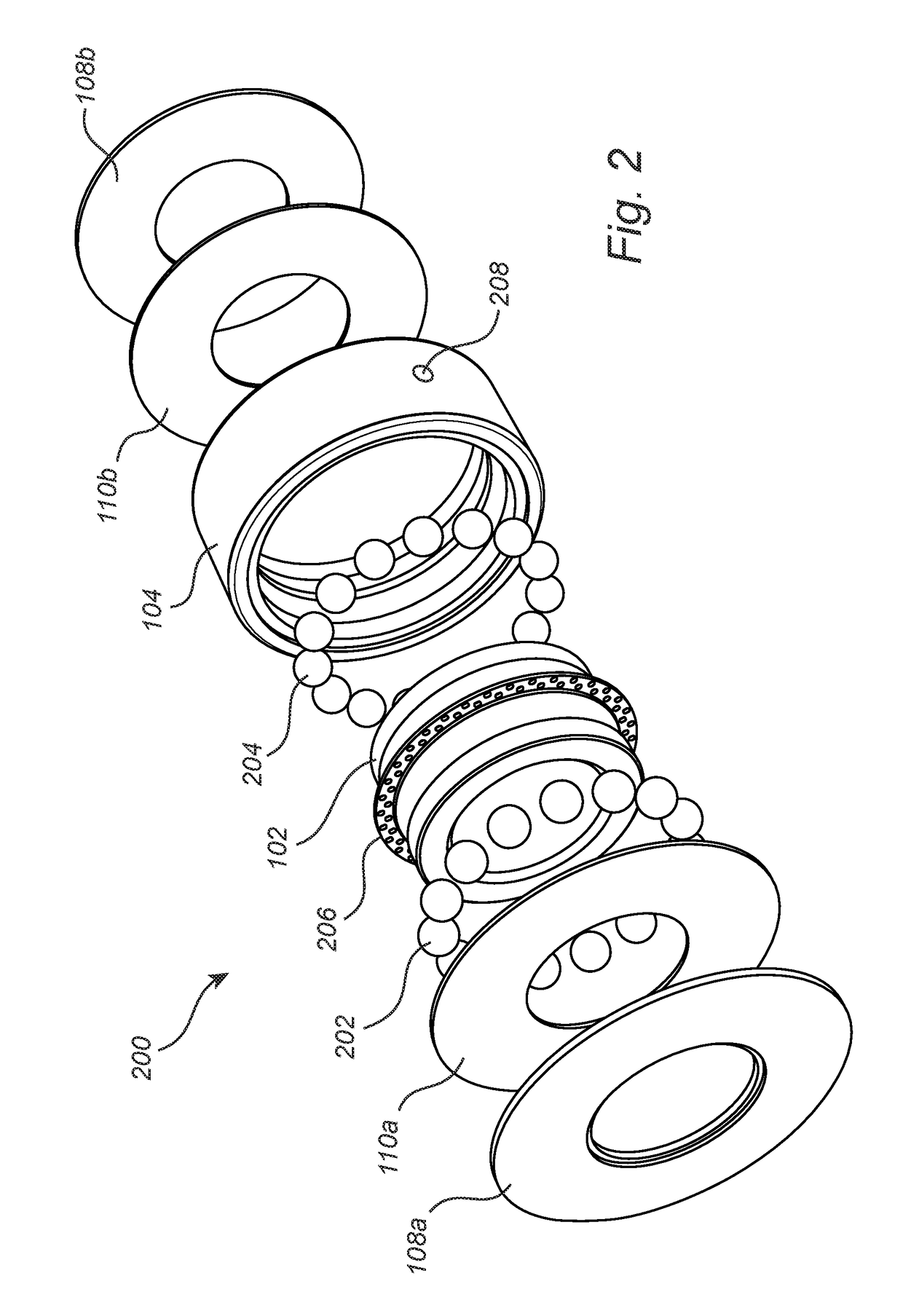Capacitance measurement in a bearing
a technology of capacitance measurement and bearing, which is applied in the direction of mechanical equipment, rotary machine parts, instruments, etc., can solve the problems of hydrogen embrittlement, surface erosion and cavitation of bearings, and failure of bearings
- Summary
- Abstract
- Description
- Claims
- Application Information
AI Technical Summary
Benefits of technology
Problems solved by technology
Method used
Image
Examples
Embodiment Construction
[0036]In the present detailed description, various embodiments of bearing arrangement according to the present invention are mainly discussed with reference to a ball bearing. It should be noted that this by no means limits the scope of the present invention which is equally applicable to any type of bearing comprising a lubricant.
[0037]FIG. 1 is an exploded view of a bearing 100 comprising an inner race 102, an outer race 104 and a plurality of rolling elements 106 in the form of balls arranged between the inner and outer race. The bearing further provides sealing rings 108a-b arranged on the respective sides of the bearing to seal the bearing. Herein, both the sealing rings 108a-b and the races 102,104 are made from a conductive material. Furthermore, electrically insulating frames 110a-b are arranged to electrically insulate the sealing rings 108a-b from the races 102,104. A lubricant (not shown) is arranged within the bearing to provide lubrication for the rolling elements 106. ...
PUM
 Login to View More
Login to View More Abstract
Description
Claims
Application Information
 Login to View More
Login to View More - R&D
- Intellectual Property
- Life Sciences
- Materials
- Tech Scout
- Unparalleled Data Quality
- Higher Quality Content
- 60% Fewer Hallucinations
Browse by: Latest US Patents, China's latest patents, Technical Efficacy Thesaurus, Application Domain, Technology Topic, Popular Technical Reports.
© 2025 PatSnap. All rights reserved.Legal|Privacy policy|Modern Slavery Act Transparency Statement|Sitemap|About US| Contact US: help@patsnap.com



